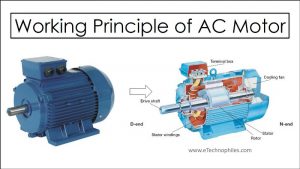Last updated on June 30th, 2021 at 05:39 pm
The AC motor working principle is based on the simple principles of magnetism. But before discussing the AC motor working principle in detail, let’s get the basics out of the way. AC is an abbreviation for Alternating Current. While a DC or Direct current remains constant with time, an Alternating Current changes its direction periodically.
Difference between Alternating current and Direct current:
A DC voltage profile is shown in the figure given below. See how the magnitude of voltage remains constant as time progresses. A DC generator and DC motor require this kind of voltage to operate.

Now given below is the AC voltage profile.
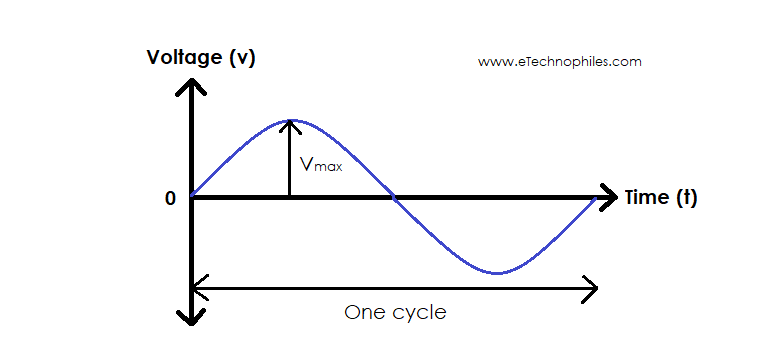
- In an AC waveform supply of the AC motor, the magnitude of voltage starts from zero, increases to a maximum value, and then starts decreasing till it attains zero again. It makes a half cycle and is known as a positive half cycle.
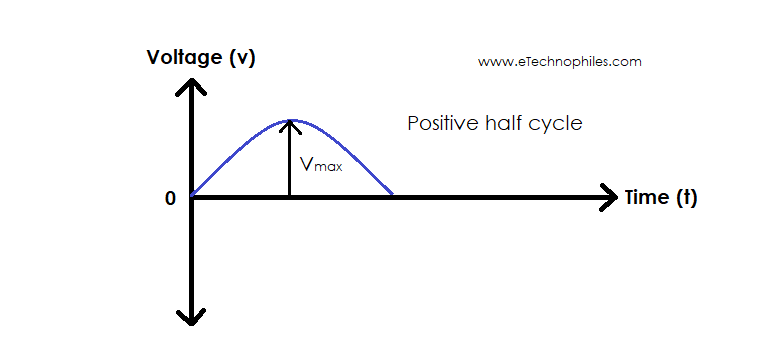
- After completing half cycle, the magnitude of voltage again increases, but now in the opposite direction. It follows the same pattern as of positive half cycle and is known as the negative half cycle.
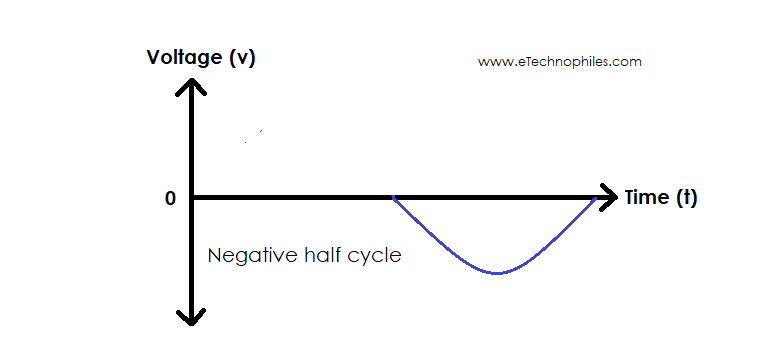
- The combination of positive and negative cycles makes one complete cycle.
- The time taken to complete this cycle is known as the Time Period. The reciprocal of the time period is frequency. So, for an electrical system of frequency 50 Hz, this one cycle completes in 0.02 sec.
- AC motors work on the principle of Electromagnetic Induction. It converts the electrical energy (in alternating current form) to mechanical energy (rotation of shaft).
- The working principle of the AC motor is explained in detail after the basic construction of the AC motor.
| Looking for DC motor working principle? |
Basic Construction of an AC Motor
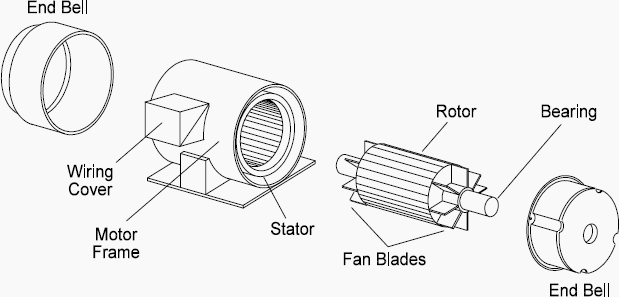
So after understanding the basics, let us learn how the AC motor looks from the inside.
- If we simplify the construction of an AC motor, it consists of two main parts. A stationary structure (aka stator) and a rotating part (aka rotor).
- The stationary part consists of coils covering its entire inner periphery. On passing an electric current through these windings, the electromagnets energize to create poles of alternate polarity.
- AC motors either use a permanent magnet or a core made of thin laminated steel as the rotor. The latter uses conductor bars instead of coils of wire as the conductor.
- A shaft holds the rotating part of the motor. The bearings between them allow free movement to the rotor.
- An outer frame encloses both the stationary and rotating part. It protects the motor from water or any other environmental factors.
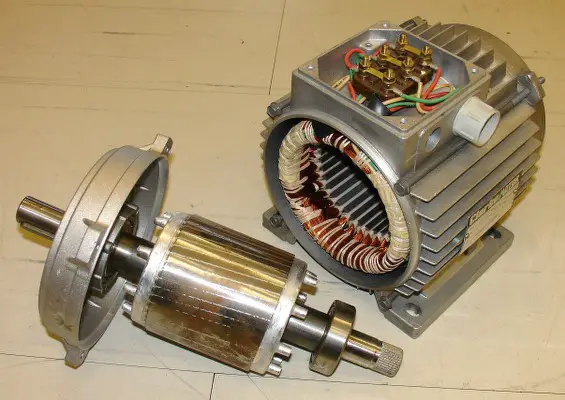
Working Principle of AC Motor in detail
To understand how an AC motor works, consider a permanent magnet rotor. The rotor moves freely between two electromagnetic stator poles (Pole A and B), with a small air gap between them. The electromagnets connect directly to a source of AC supply.
On giving the AC supply, the electromagnets get energized and form Magnetic poles.

Case 1:
During the positive half cycle of AC supply, let pole A attains a North Pole polarity, and pole B attains a South Pole polarity. Now according to the law of magnetism, the unlike poles will attract each other. So, Pole A attracts the south pole of the rotor. And the rotor gets aligned in a position, as shown in the figure.
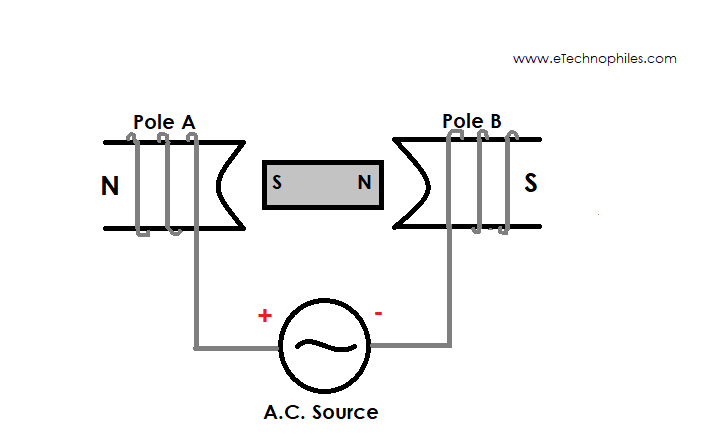
Case 2:
During the negative half-cycle, the polarity of AC supply gets reversed, and hence the polarity of poles also reverses. So now Pole A attains South pole polarity, and Pole B gets North pole polarity.
In this situation, the like poles face each other. So the repulsive magnetic force will try to deflect the rotor from this position. As the rotor deflects, the attractive magnetic force comes into the picture. And hence now the Pole A attracts the north pole of the rotor. The rotor aligns in a new position, as shown in the figure.
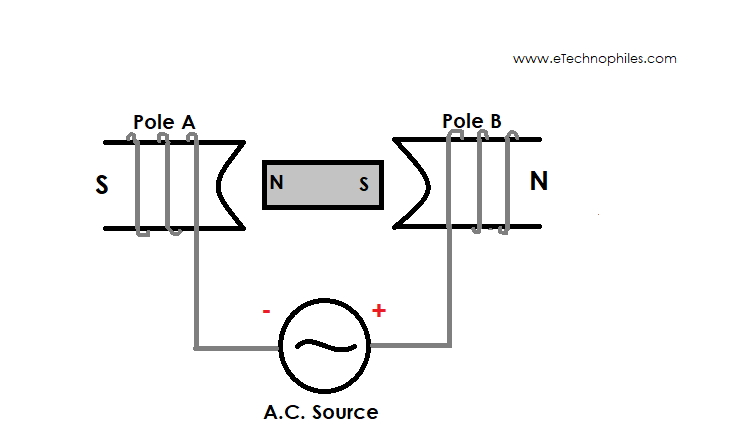
Rotating Magnetic Field in AC Motor
The rotor has revolved by an angle of 180 degrees. The rotor again turns 180 degrees in the upcoming positive half cycle and so on. This rotor revolution continues as long as supply is available to the Stator winding.
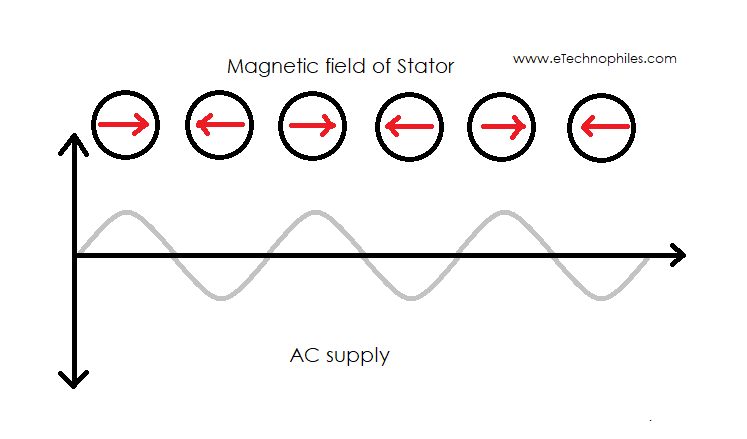
If we observe, the magnetic field of the stator is changing continuously. In every cycle of AC supply, the magnetic field seems to be rotating inside the stator periphery. In technical terms, this is called a rotating magnetic field.
What is RPM (Revolutions per Minute)?
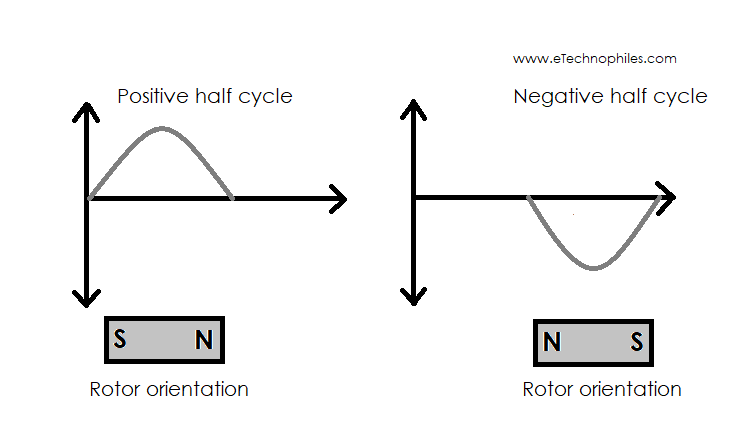
For any rotating machine, RPM signifies the speed of the rotor. It is the number of revolutions the rotor makes in one minute. The above figure shows that the rotor revolves by 180 degrees in one AC cycle. So, for a 50Hz system, the rotor completes one revolution in 0.02 seconds. Correct? So, in one second, this rotor will make 50 revolutions. And hence, in one minute, the rotor will successfully revolve 3000 times inside the stator periphery. Very fast, right? So, in our discussed example, the rotor speed is 3000RPM.
Conclusion
The above theory was just an example to explain how an AC motor works. In electrical systems, the AC motors usually have more than two electromagnetic poles for a better flux distribution. Not all AC motors use a permanent magnet. Different types of rotors are required, depending on the application. But the basic working principle of an AC motor always remains the same. i.e., making the rotor revolve according to the rotating magnetic field of the stator.
